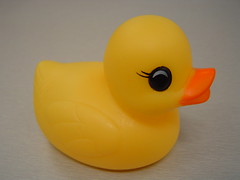Bucket Hunt
Team PEN15
Genre:
Board Game Communication Method: Computer Item: Bucket
Game Overview:
Essentially the aim of Bucket Hunt is just that: hunt for a bucket. A bucket will be hidden somewhere around the RMIT University city campus. The players play a board game on a computer (made in Macromedia Flash) to get clues and hopefully figure out the location of the bucket.
Aim:
The aim of the game is to test players in their problem solving skills as well as their teamwork and co-ordination skills.
Number of Players:
The game is played by 3 teams of 5-7 people working on separate computers, with separate flash board games.
Physical Location:
The game is played within the RMIT University city campus but it can be adaptable to any other location if the game master changes the clues.
Special Paraphernalia:
Teams will need access to computers that will have the Flash games working on them. Headphones are also supplied for each team to use to listen to the clues.
Goals:
- The goals of the game are:
- Teams choosing someone as their Listener (if they want)
- Teams would be working out the clues.
- Piecing all the clues together
- Working out the location of the bucket.
- Players will achieve the goals by hitting the [ROLL DICE] button in the Flash game.
- This would then activate an audio clip depending on which square the player lands on.
- One member of the team listens to the audio clip and conveys it to the rest of the team.
- Once the player icon has landed on a square the team has 7.5 minutes to work out the clue and hunt for the bucket.
- The more clues you work out the more likely the team will find the location of the bucket.
- If the team does not return within the 7.5 minute time limit, they incur a 1 minute penalty until they can roll again.
- If the team has no idea about the location of the bucket, or returns within the 7.5 minutes, they must still wait until the 7.5 minute finding period is up.
- If they hit the [BACK] button before the 7.5 minutes is up they can avoid the 1 minute penalty.
- If the player hits [BACK] button they will start from square 1 again and work their way around the board once again, hopefully landing on different clues to increase their chances of finding the bucket.
- These steps are repeated until one of the teams is able to piece enough clues together to find the bucket.
- There are 3 teams
- Each team has 5-7 players - Each team sits at a separate computer
- Each computer has the Flash Board Game running on it
- All team members must (re)enter the room before the dice can be rolled
- The players cannot look for the bucket until they land on the bucket square
- The Flash game is programmed to land on the bucket square once every round, e.g. If the player is on square 18 and then rolls a 4, they will still be moved to the bucket square rather than square 2.

